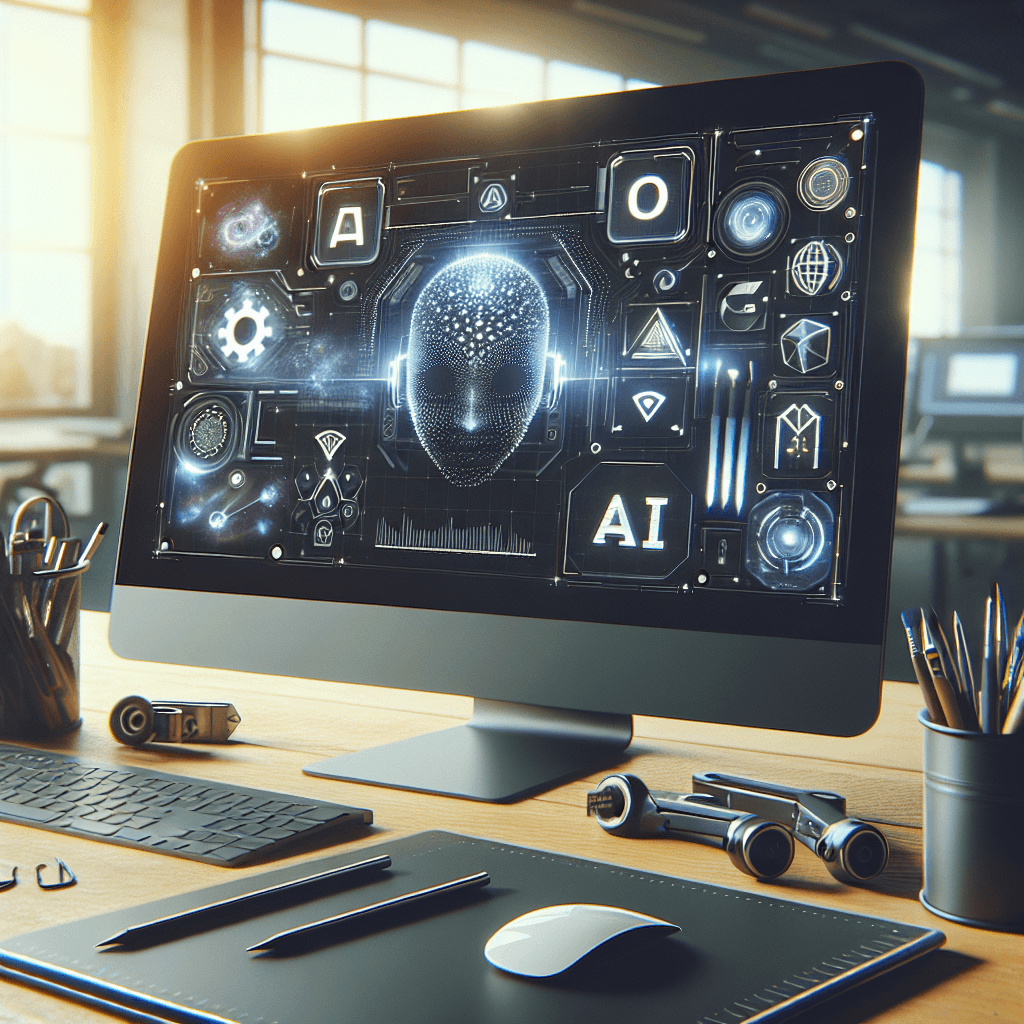In the rapidly evolving world of technology, user interface design has become a critical aspect of product development. With the advent of artificial intelligence, designers now have an array of tools at their disposal to create stunning interfaces with ease. Let’s dive into the top AI tools that are revolutionizing the way we design user interfaces effortlessly.
The AI Design Revolution
Artificial intelligence has fundamentally changed how designers approach user interface creation. From automation of repetitive tasks to generating design suggestions, AI tools are streamlining workflows, allowing designers to focus on creativity.
What Makes AI Tools Essential?
In an industry where user experience is paramount, AI tools offer features such as predictive analytics, real-time collaboration, and design prototyping. These capabilities enhance productivity while ensuring user-centric designs, making them indispensable for modern designers.
Figma: Collaborative Design Made Easy
Figma stands out as one of the most versatile design tools available. It allows multiple users to collaborate in real-time, and its plugin ecosystem powered by AI enhances its capabilities. Designers can utilize plugins to automate tasks and generate design elements quickly, making it a favorite in the industry.
Sketch: Powering Professional Design
Sketch has long been a staple among professional UI designers. With its easy-to-use interface and robust plugin library, Sketch integrates AI features that optimize workflow by generating design suggestions and automating repetitive tasks. The ease with which designers can iterate on their ideas makes Sketch a top choice.
Adobe XD: A Comprehensive Design Suite
Adobe XD not only offers powerful design tools but also integrates AI capabilities that enhance design efficiency. Its features allow for rapid prototyping, making it simple to transform ideas into interactive experiences. Adobe’s commitment to user interface design ensures that XD remains at the forefront of innovation.
Framer: Bridging Design and Code
For designers who crave interaction, Framer merges design with code seamlessly. With AI assisting in the generation of responsive layouts and animations, users can create interactive interfaces without extensive coding knowledge. This tool empowers designers to bring their visions to life effortlessly.
Canva: Simplifying Graphic Design
While not exclusively a UI tool, Canva has rapidly gained traction within the design community. Its AI-powered features offer design suggestions and templates that cater to various industries, making it easy for teams with limited design skills to create professional-looking interfaces.
Uizard: Converting Ideas into Usable Interfaces
Uizard is a revolutionary tool that transforms sketches and wireframes into functional UI designs using AI. This capability allows designers to focus on conceptualizing rather than getting bogged down in technical details. It’s especially valuable for startups and small teams working with limited resources.
Tiled: Custom App Development
Tiled offers an innovative approach to app design, incorporating AI to streamline the customization process. Designers can create interactive layouts and user flows rapidly, allowing for faster project turnaround times, which is crucial in today’s fast-paced market.
Zeplin: Seamless Handoff to Developers
Zeplin enhances the design-to-development handoff process, making it easier for developers to understand design specifications. Its AI capabilities help in maintaining consistency across platforms, ensuring that the final product aligns with the original design vision.
InVision: Rapid Prototyping and Testing
With InVision, designers can create prototypes that look and feel like real applications. AI features within InVision simplify user feedback collection, enabling more informed design decisions. This iterative process fosters continuous improvement and enhances the user experience.
Sympli: Integrating Design and Development
Sympli stands out by bridging the gap between design and development teams. By automating the extraction of design assets and specifications, it enhances collaboration and reduces variances between design and implementation, a critical factor for successful projects.
Marvel: Design and User Testing in One Place
Marvel combines design and user testing functionalities, allowing designers to create interfaces and gather user feedback seamlessly. AI-driven insights help teams refine their designs based on user behavior, ensuring that the end product resonates with its audience.
Sketch2React: Turning Designs into Code
Sketch2React leverages AI to convert Sketch designs directly into code, drastically reducing the time spent on hand-coding. For designers with limited programming skills, this tool serves as a bridge to making their designs a reality without needing to learn complex coding languages.
Lookback: User Insights Powered by AI
Understanding user interaction is key to enhancing UI design. Lookback utilizes AI to analyze user feedback and behavior, helping designers identify pain points and opportunities for improvement. This focus on user-centered design is essential in today’s competitive landscape.
Aesthetic: AI-Driven Design Insights
Aesthetic employs AI to offer personalized design insights, making it easier for designers to create interfaces that are visually appealing and user-friendly. By analyzing design patterns and user preferences, Aesthetic enables designers to make informed decisions quickly.
ColorMind: The AI Color Palette Generator
ColorMind is an AI-powered tool that assists designers in creating harmonious color palettes. By analyzing billions of existing color schemes, it generates suggestions that save time and elevate design aesthetics, ensuring that color choices enhance user experiences.
UserTesting: AI for Real-Time Feedback
UserTesting combines user feedback with AI analytics to deliver real-time insights into how users interact with interfaces. This capability allows designers to make data-driven decisions quickly, optimizing their designs based on concrete user data.
The Importance of Staying Updated
In today’s fast-evolving tech landscape, designers must remain informed about the latest tools and trends. AI-driven design tools not only enhance creativity but also ensure that businesses stay competitive by delivering exceptional user experiences.
Final Thoughts
As we advance into a future dominated by technology, embracing these AI tools for user interface design is essential. They not only streamline the design process but also empower designers to create more impactful, user-friendly interfaces. By leveraging AI-driven insights, today’s designers can turn their ideas into visually stunning realities with newfound efficiency. In this competitive environment, staying at the forefront of design innovation is no longer an option; it’s a necessity.








